Tatzel (TAT-zil)
"Get! Get I say! Before I bash all your stinky little heads in with my pan!"
Tatzels are small, fur-covered mammals with dragon wings. They are scavenger opportunists, and take special interest in digging through the trash of sapient settlements. Wild tatzels are considered annoying pests, but domesticated tatzels are known to make adorable home companions.
Basic Information
Anatomy
Tatzels are quite small and lean and rarely weigh more than six pounds. They have long, thin snouts with needle-like teeth, and large pointy ears. They are quadrupedal and digitigrade. Their front paws have three toes and an opposable thumb, and their back paws have four toes.
They have short fur covering most of their body, save for their snouts, ears, paws, and tails, which are scaley. The scales fade away on the palms of their paws. The lack of fur on these areas makes it easier for the tatzel to keep clean.
At the transition between their neck and their chest, they have a much fluffier area of fur called the "scarf". The purpose of the scarf isn't certain. It could protect the tatzel from attacks to the neck, shield the starting point of their wing slits, attract mates, keep them warm during cold nights, or all of the above.
They have V-shaped wing slits, and their wings are short and wide, which optimizes them for short but speedy flights. Since they are so small, they can generate their wings very quickly, which comes in handy when fleeing from predators.
Wild tatzels come in a variety of neutral colors, such as brown, black, gray, and cream. Their skin and scales are always darker than their fur, which helps protect them from sunburn. They have dark eyes with slitted pupils.
Glow
Tatzels are of Sao's Luminosity, and have celestial cores. They use their Glow to form their wings and for self defense.
As a threat display, they will open their jaws wide, showing off their brightly glowing mouths. If further provoked, they will deliver a "spark bite", where they discharge a flash of Glow into their bite, powerful enough to cause 2nd degree burns in some cases.
A tatzel's spark bite is searingly painful and has a knack for getting infected. If the tatzel misses and instead clamps onto a fold of clothing, they can blacken the fabric or even set it on fire!
Luckily, tatzels don't spark bite often, preferring to save their Glow in case they need to fly away. This doesn't mean their normal bites are much better!
Genetics and Reproduction
Tatzels have a gestation period of about 42 weeks, and give birth to a litter of three to seven "kitzels". The kitzels are weaned after about 8 weeks, reach sexual maturity after about 6 months.
Mother tatzels like to find dark, secure places to give birth in. This could be an abandoned rabbit den, a tipped-over trashcan, or someone's basement. They will build a nest out of whatever soft, warm materials they can find. They are very protective of their babies and are aggressive to anything they deem as a threat, even if it outweighs them by several hundred pounds.
Male tatzels have no interest in raising young and would rather chase the females around all day.
Ecology and Habitats
Tatzels used to live in the steppes, scrublands, and forests of Auzera. Now, they're more frequently found in cities. They thrive amongst the ample food, shelter, and lack of predators.
They are crepuscular, and sleep for most of the hot day. They like to find shaded, elevated areas to sleep in. This is usually a tree, the west side of a balcony, or a rocky outcropping. Sometimes it's someone's attic.
Dietary Needs and Habits
Tatzels are omnivorous and can eat just about anything. As opportunists, they will just as quickly gobble up a beetle as dig up someone's backyard vegetables.
Their stomachs are quite strong and they are resistant to many diseases, so tatzels often have no problem eating rotting food and carrion. But while tatzels are hardy, they aren't invincible. Large amounts of chocolate, garlic, onions, or certain powerful spices are toxic to tatzels. They often aren't wise enough to avoid these foods, and so sometimes end up ill or worse after a trashcan raid.
They have a reputation for always being hungry and are very defensive over their food. They will sometimes spend so much time fighting other tatzels over a morsel that they don't actually get to eat it.
They will hide bits of food in hard-to-reach locations for later. Some tatzels that are too lazy to make their own stash will instead follow another tatzel to theirs and steal it.
Additional Information
Social Structure
Tatzels often gather in hoards that can be as numerous as 25 individuals. They usually group together for safety in numbers and for mating purposes and rarely form tight bonds with each other. They will often squabble with each other over food or mates.
Male tatzels like to claim small areas of territory and a certain number of females for themselves. Whether or not their claims are respected varies from region to region. Males are very aggressive to other males and are the most likely to start fights.
Females are a little calmer on average, and will sometimes form small sororities where they all work together to care for their young. Kitzels will play with each other to practice fighting and flying.
Domestication
Even if they are a nuisance, tatzels are undeniably adorable. Domesticated tatzels are kept as pets all over Auzera. These domesticated variants have calmer temperaments, are a bit bigger, and come in a huge range of colors and patterns.
Colorations
Name
Description
Image
Russet/Normal
Brown, reddish, or tan fur with darker brown markings and black or brown skin and scales.
Midnight
Completely black with amber eyes.
Smoky
Gray fur with black markings and black skin and scales.
Albino
White with orange markings, orange skin and scales, and ruby colored eyes.
Blue
Bluish gray fur with pale markings and pale gray scales and skin.
Ruby
Rusty colored fur with dark brown or black markings and black or brown skin and scales.
Patterns
Name
Description
Image
Normal/Wildtype
Two lateral stripes that travel down either side of the body along the wing slits. The scales and skin are patternless.
Mottled/Tortoiseshell
Splotchy or freckled patterned fur. The scales and skin are patternless.
Ring-tailed
Patternless fur with stripes ringing the tail and sometimes legs.
Spotted
Large spots of secondary color on the fur. Some variants also have spots on the skin and scales.
Patternless
No distinct markings on the fur, skin, or scales.
Breeds and Variants
Name
Description
Image
Normal
The normal appearance of a tatzel, with fur covering their midsection and bare tails, feet, snouts, and ears.
Mouse-eared
Rounder, wider ears than normal.
Hairless
Very little or no fur; bare skinned.
Long-haired
Much longer, thicker fur than normal, and the fur covers a higher percentage of the body.
| Name | Description | Image |
|---|---|---|
| Russet/Normal | Brown, reddish, or tan fur with darker brown markings and black or brown skin and scales. | |
| Midnight | Completely black with amber eyes. | |
| Smoky | Gray fur with black markings and black skin and scales. | |
| Albino | White with orange markings, orange skin and scales, and ruby colored eyes. | |
| Blue | Bluish gray fur with pale markings and pale gray scales and skin. | |
| Ruby | Rusty colored fur with dark brown or black markings and black or brown skin and scales. |
| Name | Description | Image |
|---|---|---|
| Normal/Wildtype | Two lateral stripes that travel down either side of the body along the wing slits. The scales and skin are patternless. | |
| Mottled/Tortoiseshell | Splotchy or freckled patterned fur. The scales and skin are patternless. | |
| Ring-tailed | Patternless fur with stripes ringing the tail and sometimes legs. | |
| Spotted | Large spots of secondary color on the fur. Some variants also have spots on the skin and scales. | |
| Patternless | No distinct markings on the fur, skin, or scales. |
| Name | Description | Image |
|---|---|---|
| Normal | The normal appearance of a tatzel, with fur covering their midsection and bare tails, feet, snouts, and ears. | |
| Mouse-eared | Rounder, wider ears than normal. | |
| Hairless | Very little or no fur; bare skinned. | |
| Long-haired | Much longer, thicker fur than normal, and the fur covers a higher percentage of the body. |
Any combination of pattern, color, and special variant are possible. Some of the colorations might look very different when combined with a fur variant. For example, hairless albino tatzels are completely orange.
A pet tatzel is a medium to high maintenance pet and requires a lot of space and toys to let out its energy. They love to climb and perch as well as burrow, so specially crafted "tatzel trees" that have lots of platforms, tunnels, and perches, are a must-have. They love being outside and are very curious. To keep them well exercised and from getting bored, they should be walked for at least an hour a day, though the more time spent, the better.
Lots of tatzel owners will be charmed by the cuteness of a kitzel and impulse-buy one, only to quickly learn that tatzels--especially young ones--can be extremely destructive if they are not given the proper enrichment. Indeed, they can even start house fires if they're not properly trained to contain their spark bites! Be advised to never purchase any pet until you have done the required research and prepared the required supplies.
Show Business
Some tatzels are bred specifically for aesthetic purposes and shown off at pet shows. Show tatzels often have striking markings, silky fur, and blazing wings. They are slightly less energetic than their "lower class" cousins, but require frequent grooming to keep them looking sharp.
Unfortunately, the shrinking gene pool amongst show tatzels is resulting in many genetic defects and diseases among purebreds. Show tatzels that aren't from a reputable breeder may have drastically shorter lifespans thanks to these conditions. Some activist groups are even fighting to end tatzel-showing altogether, arguing that the toll it takes on the animals is much too high to justify using them for sapient enjoyment.
Wing Sealing
Some breeders will seal up a tatzel's wing slits, thereby removing their ability to fly. While this makes them easier to keep track of and less likely to get lost, it's horribly detrimental to the animal's physical and mental health. Sealed tatzels have lifespans half as long, and are often anxious, aggressive, and unpredictable.
The practice is widely regarded as unspeakably cruel, but some backyard breeders still perform it for uneducated or heartless buyers. The surgery can sometimes be reversed if it has been recent enough, but most tatzels aren't so lucky.
The lackluster animal cruelty laws in most Auzeran countries don't help the matter. Those that perform the surgery are rarely held accountable.
Uses, Products & Exploitation
Like all Glowfauna, tatzels are a source of edylium. They also have celestial cores, though they are quite tiny.
A tiny core must be better than no core, though, according to some Auratech inventors. The cores of dead tatzels either found on the streets or sold by pest control technicians are rapidly increasing in value. Some people are already making a job out of clearing out entire hoards of tatzels in order to sell their cores. If this practice continues to increase, their numbers might start to dwindle.
"I can't imagine how they sleep at night, knowing what they do. Do they really think that murdering hundreds of innocent creatures is right? It makes me sick. Something has to be done."

Tatzel Shopping List and FAQs
If you want to own a tatzel for yourself, here is a comprehensive list of all that you'll need!
- Tatzel harness and leash
- If you are starting with a kitzel, you'll need to replace the harness as it grows bigger or buy an adjustable harness
- You should NEVER attach the leash to your tatzel's collar!
- Collar (optional)
- In the event your tatzel gets lost, it will be easier to find if it has a collar, so it is not mistaken for a feral tatzel or stolen by somebody else
- Some tatzels absolutely refuse to wear collars. You should never force your pet to wear anything it doesn't want to
- Tatzel tree
- Get one that matches your budget
- A kitzel might prefer a smaller tree than an adult
- You can never have too many!
- Toys!
- Shiny things
- Things that make noise or crinkle, like bells
- Feathers
- Ropes; many tatzels love to play tug-of-war
- Chew toys
- If you don't give your tatzel something to chew, they'll choose your shoes!
- Food
- Many pet stores sell tatzel pellets, but be sure to eduate yourself on what ingredients are in them before deciding on a type
- Tatzels need a varied diet with lots of meat, fruit, and vegetables
- You should NEVER feed your tatzel chocolate, garlic, onion, spicy peppers, or any other strong spice
- Consider feeding your tatzel by scattering food in their tatzel tree instead of in a bowl! This mimicks their natural foraging behaviors
- Some tatzels have special dietary needs or allergies, so be sure to talk to a veterinarian about your pet's needs
- Water
- Tatzels are not too picky about their water and will drink it from a bowl just fine
- Sometimes they like to jump in and take a bath! Make sure not to put the bowl near anything that can't get wet
- Long term love and affection
- Domesticated tatzels can live as long as twelve years! Make sure you're ready to commit to loving and caring for your tatzel before you bring a kitzel home.
- If you are starting with a kitzel, you'll need to replace the harness as it grows bigger or buy an adjustable harness
- You should NEVER attach the leash to your tatzel's collar!
- In the event your tatzel gets lost, it will be easier to find if it has a collar, so it is not mistaken for a feral tatzel or stolen by somebody else
- Some tatzels absolutely refuse to wear collars. You should never force your pet to wear anything it doesn't want to
- Get one that matches your budget
- A kitzel might prefer a smaller tree than an adult
- You can never have too many!
- Shiny things
- Things that make noise or crinkle, like bells
- Feathers
- Ropes; many tatzels love to play tug-of-war
- Chew toys
- If you don't give your tatzel something to chew, they'll choose your shoes!
- Many pet stores sell tatzel pellets, but be sure to eduate yourself on what ingredients are in them before deciding on a type
- Tatzels need a varied diet with lots of meat, fruit, and vegetables
- You should NEVER feed your tatzel chocolate, garlic, onion, spicy peppers, or any other strong spice
- Consider feeding your tatzel by scattering food in their tatzel tree instead of in a bowl! This mimicks their natural foraging behaviors
- Some tatzels have special dietary needs or allergies, so be sure to talk to a veterinarian about your pet's needs
- Tatzels are not too picky about their water and will drink it from a bowl just fine
- Sometimes they like to jump in and take a bath! Make sure not to put the bowl near anything that can't get wet
- Domesticated tatzels can live as long as twelve years! Make sure you're ready to commit to loving and caring for your tatzel before you bring a kitzel home.

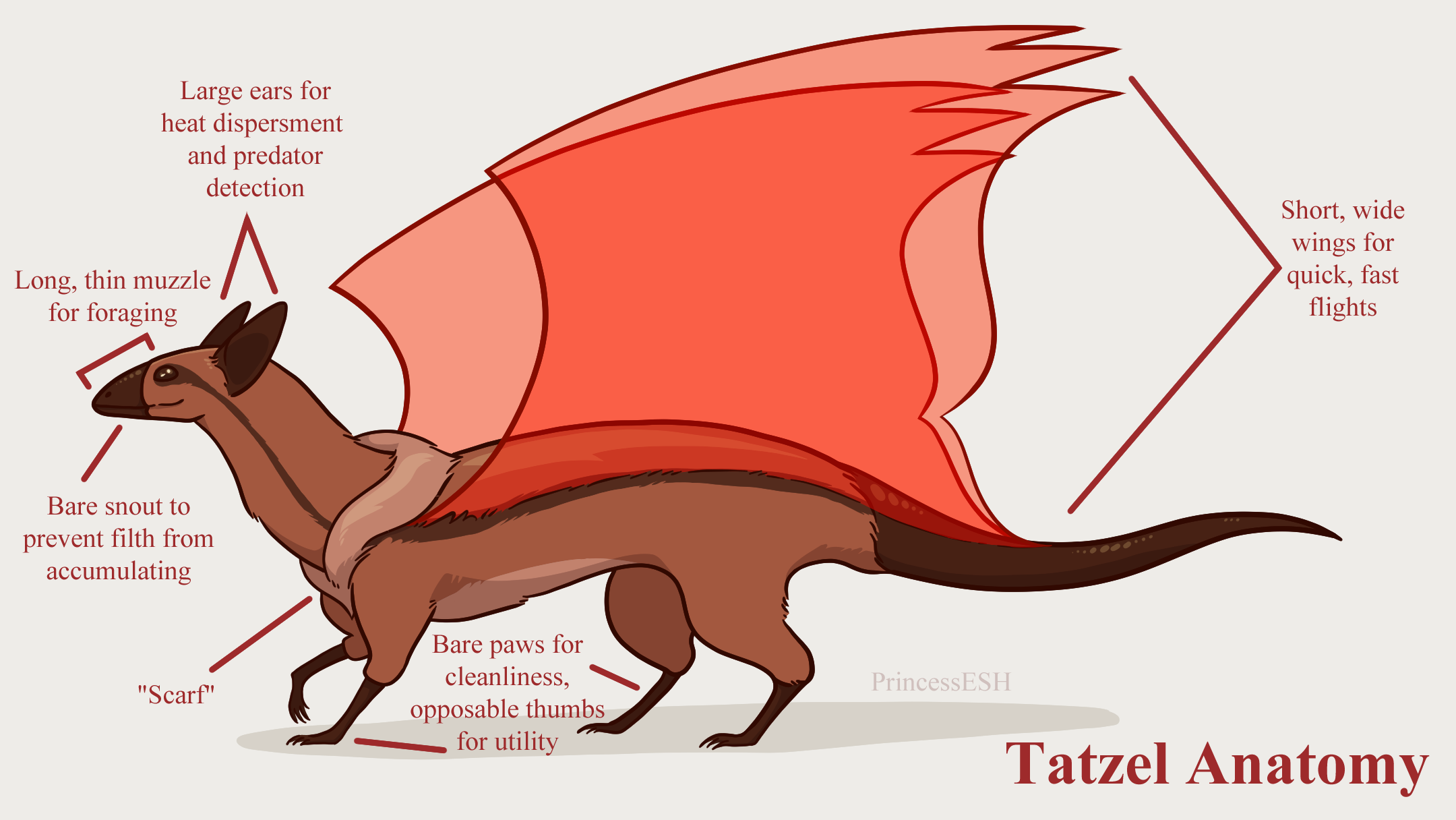
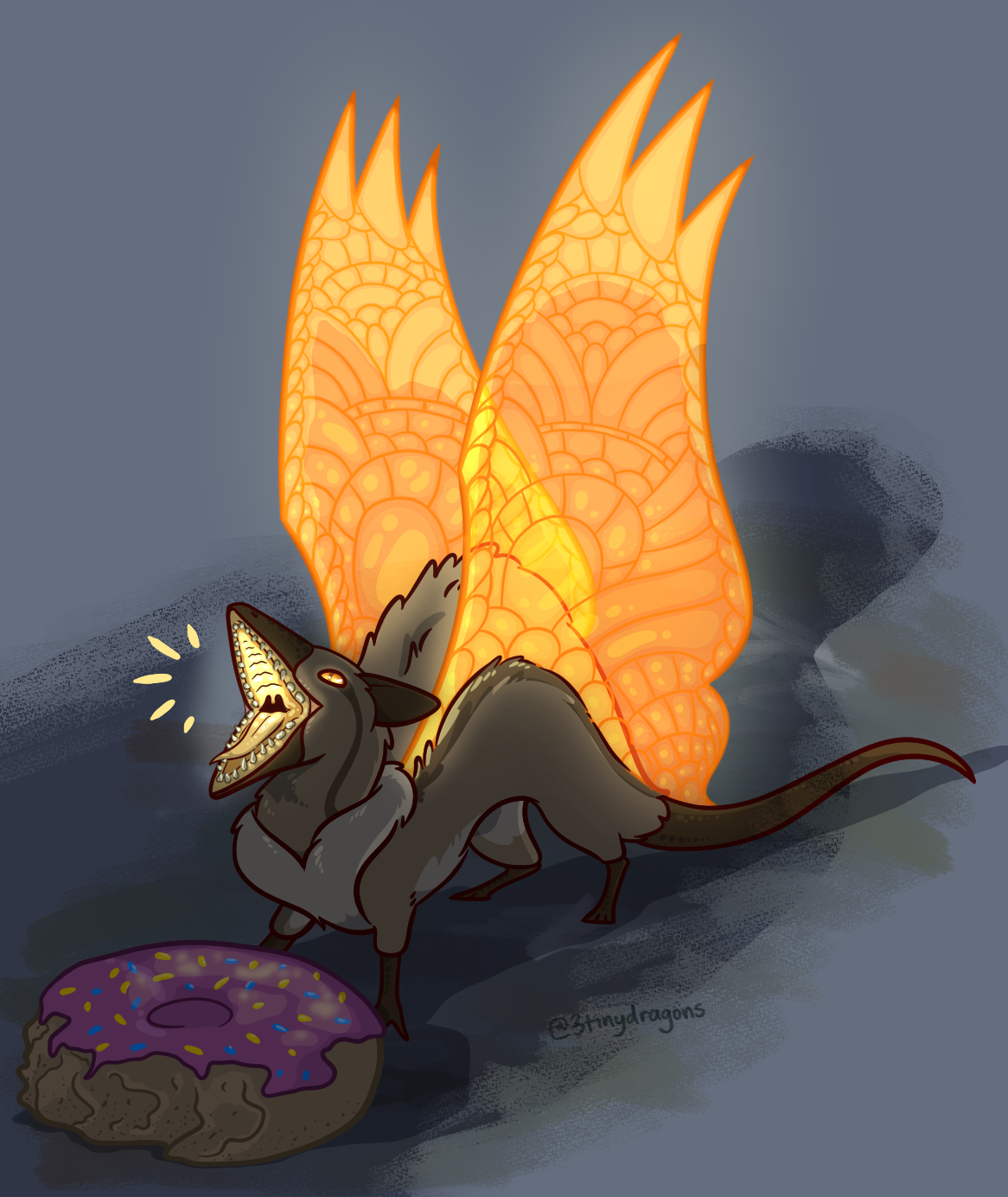

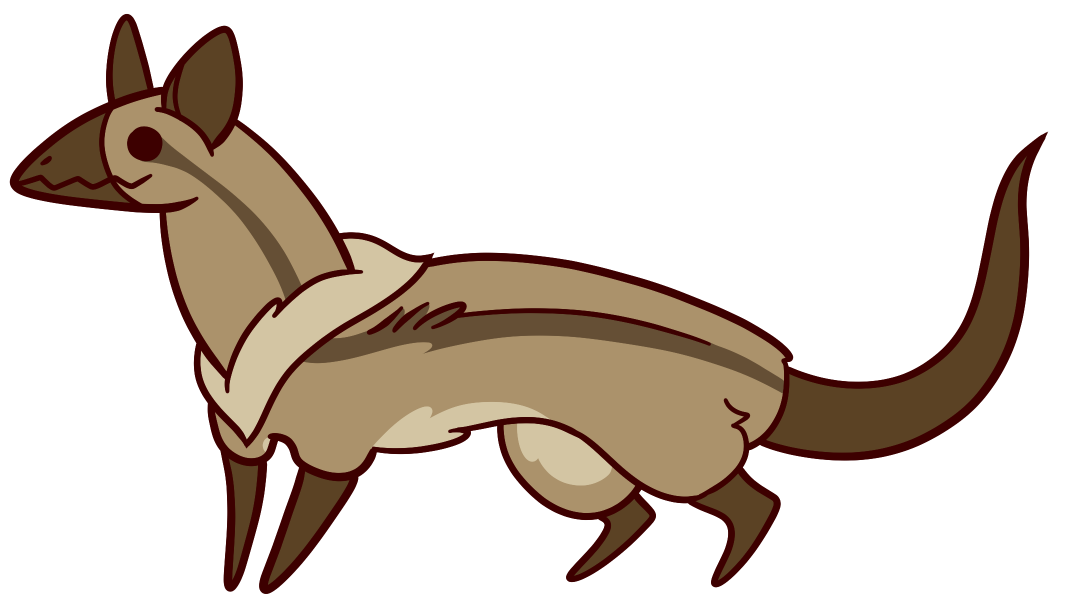
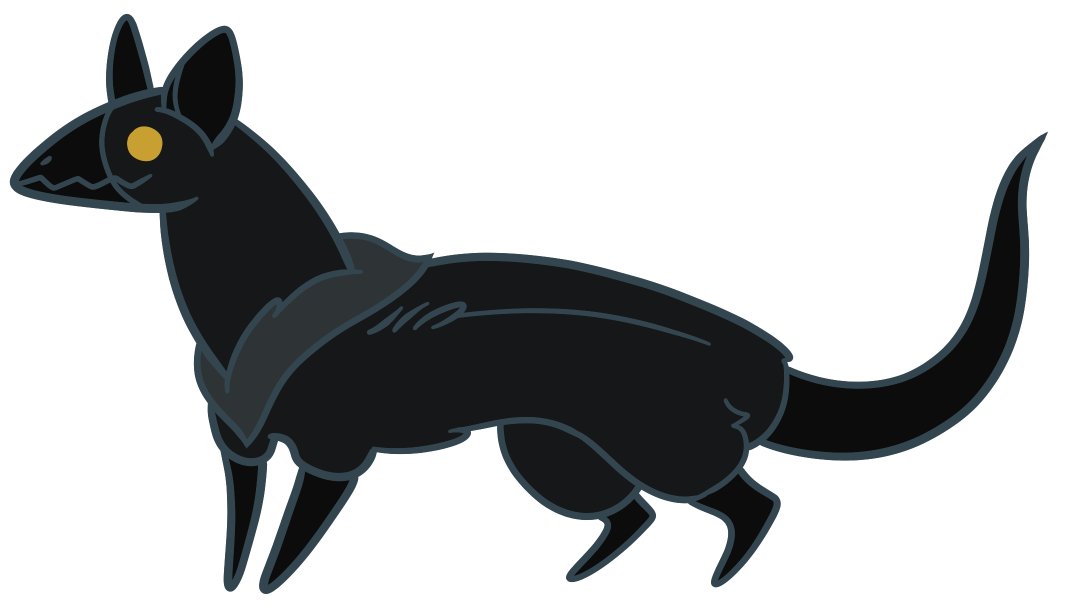
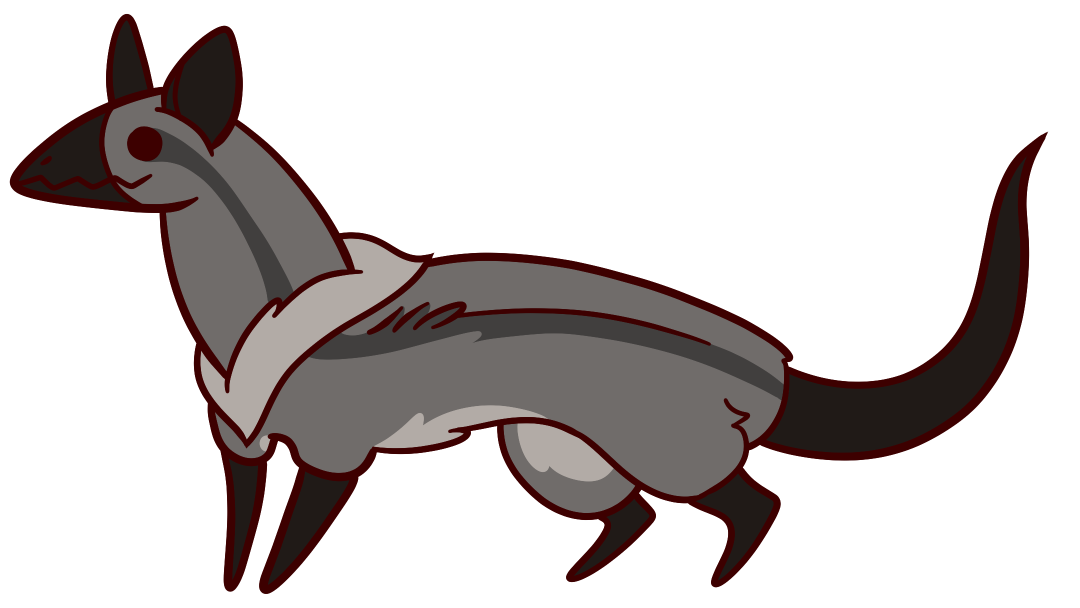
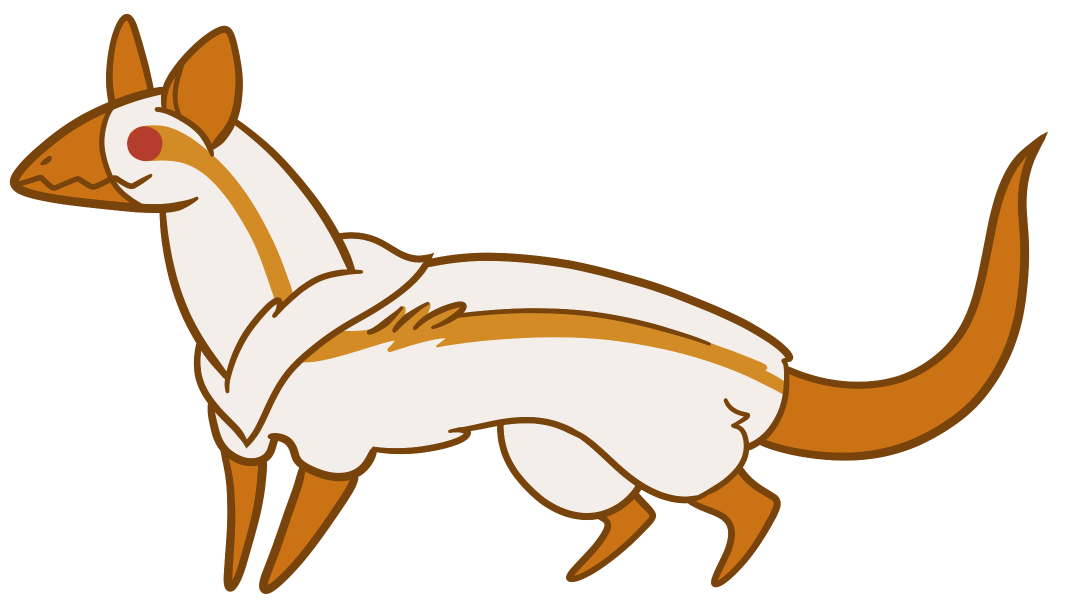
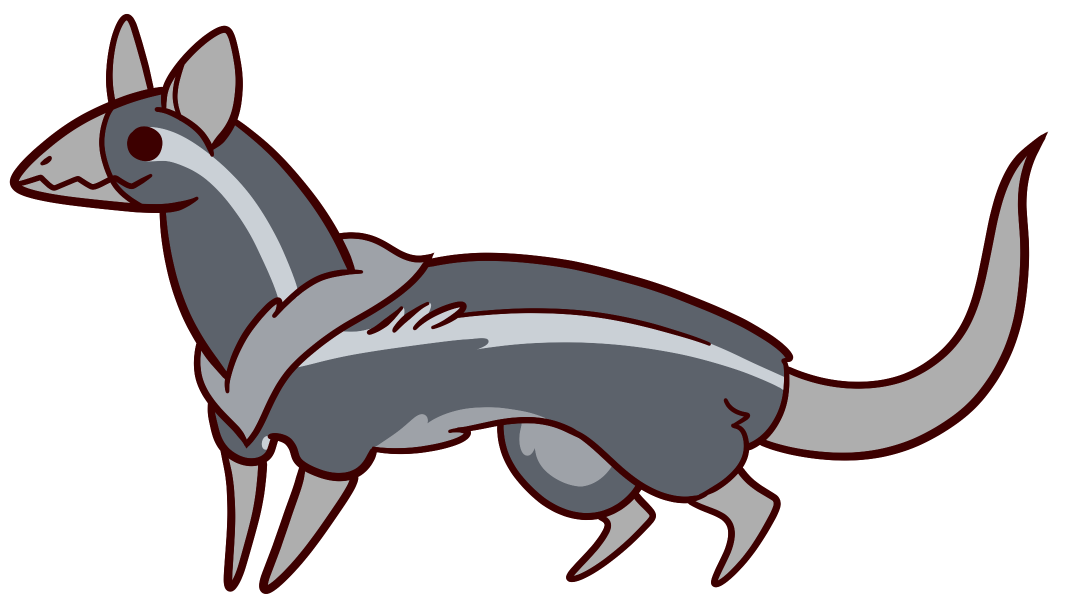
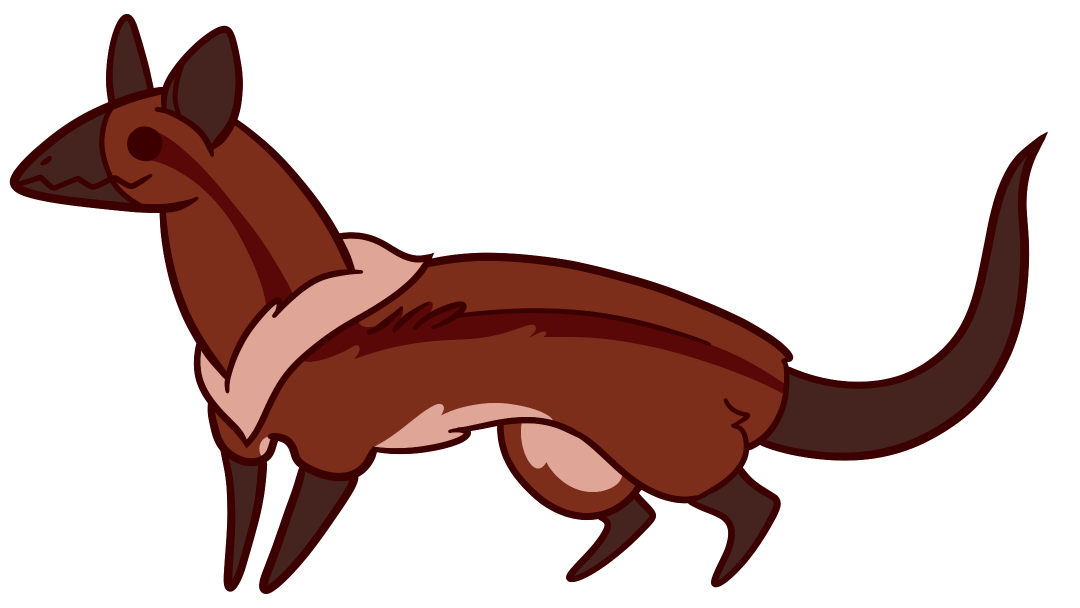

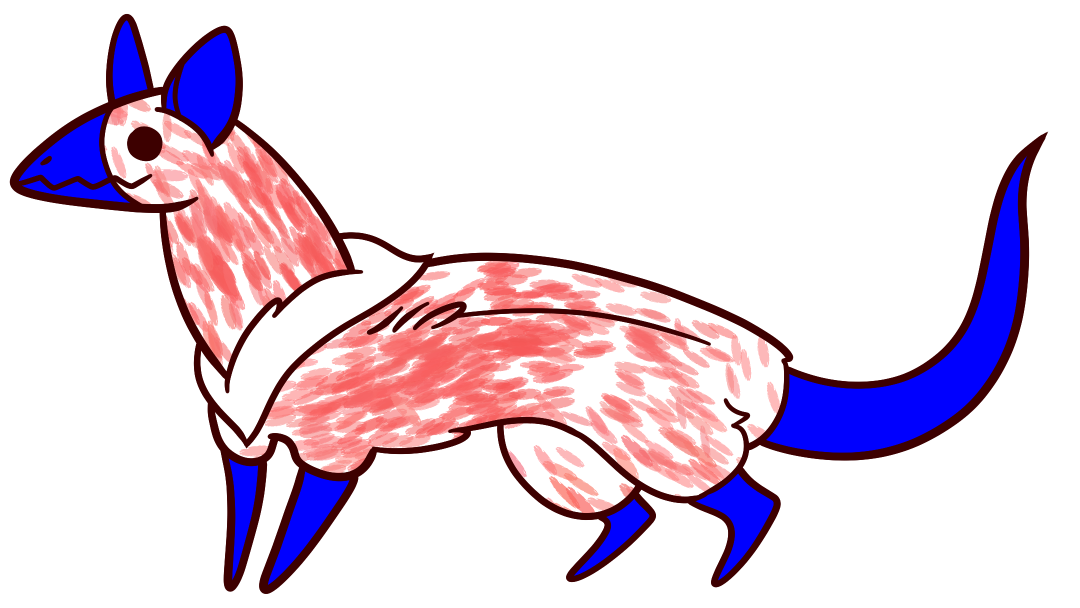

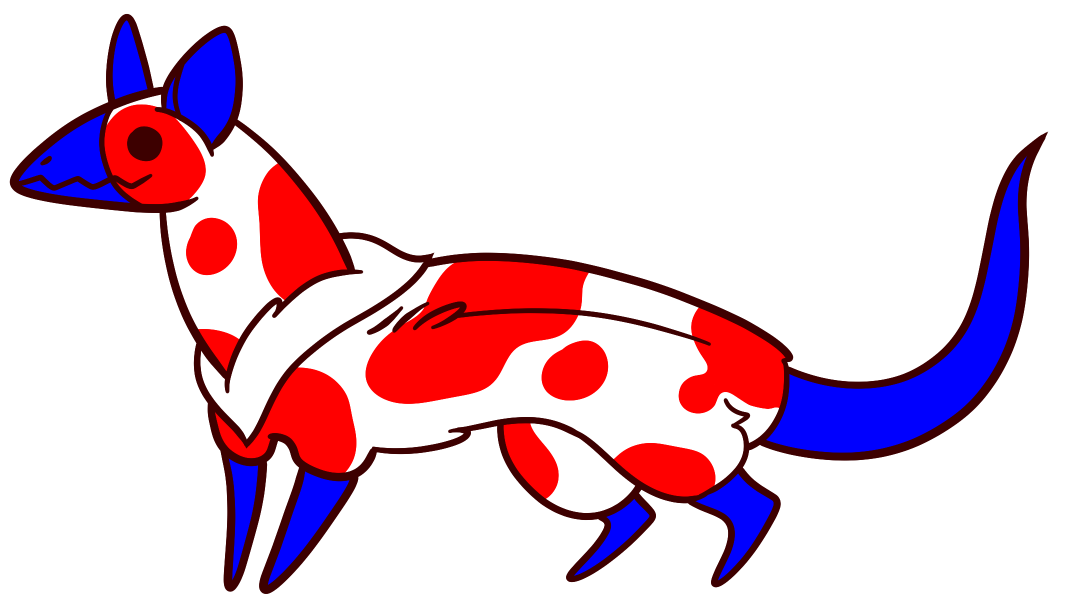

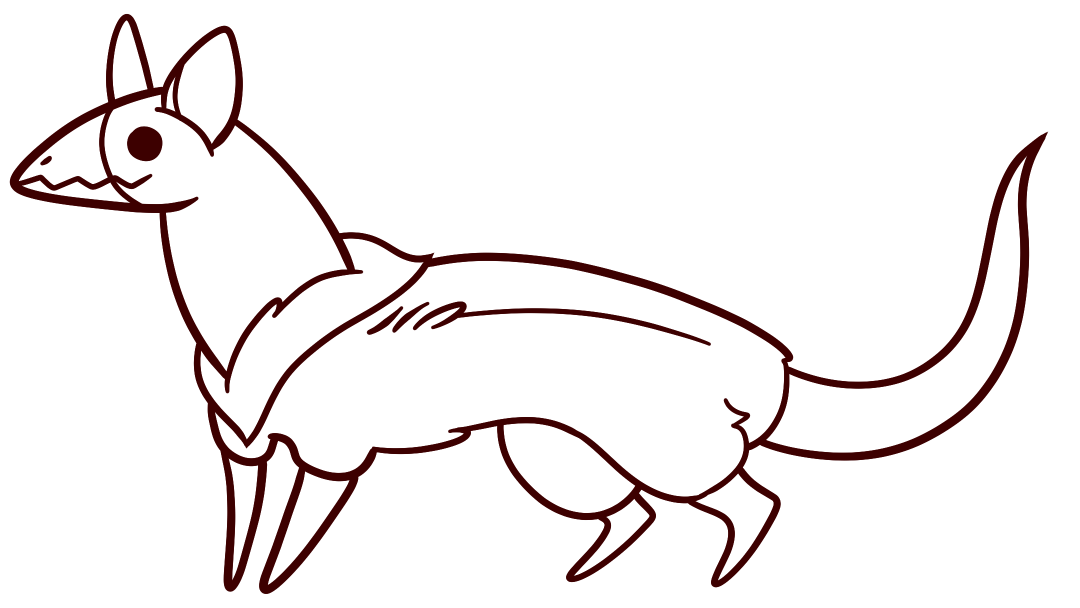
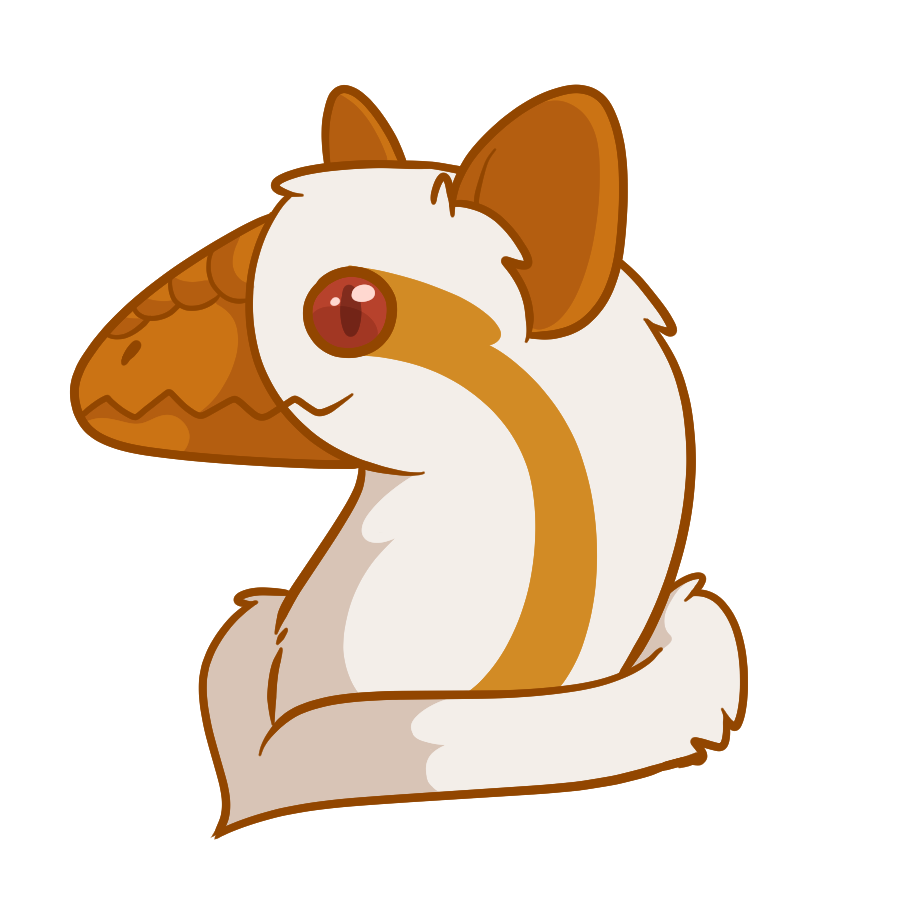

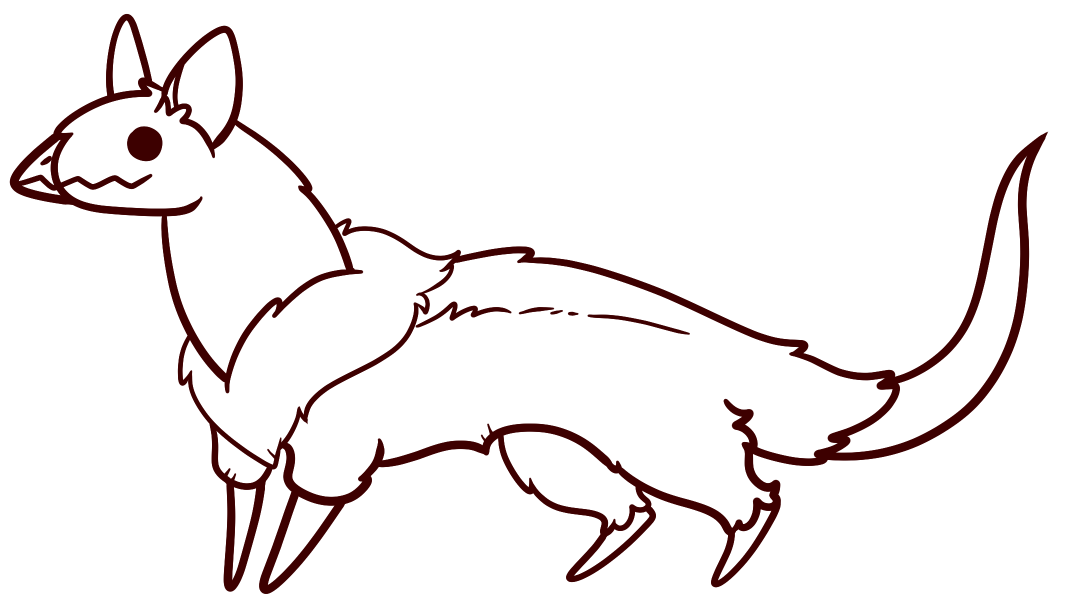
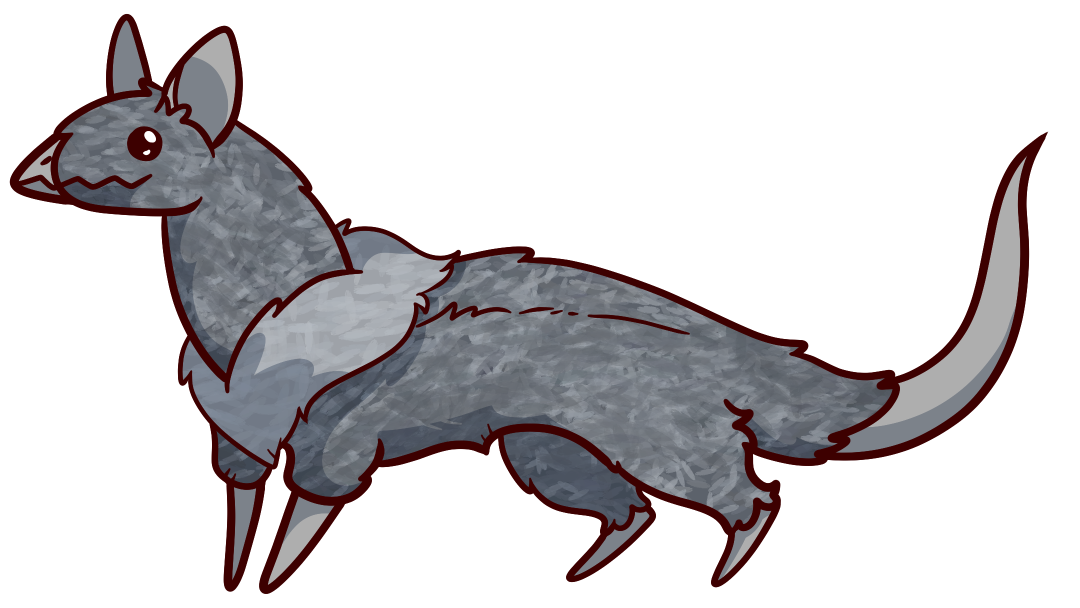










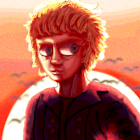
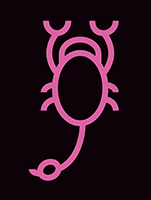

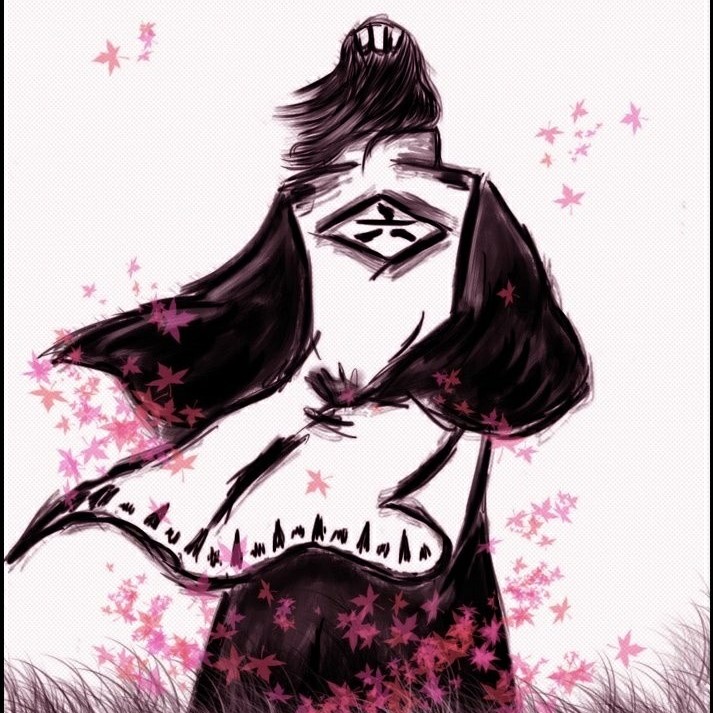
They're adorable, cuddly, and they glow! These are the most perfect creatures ever. =)
Aww thank you! I love them a lot, they're probably my favorite thing I've created so far <3